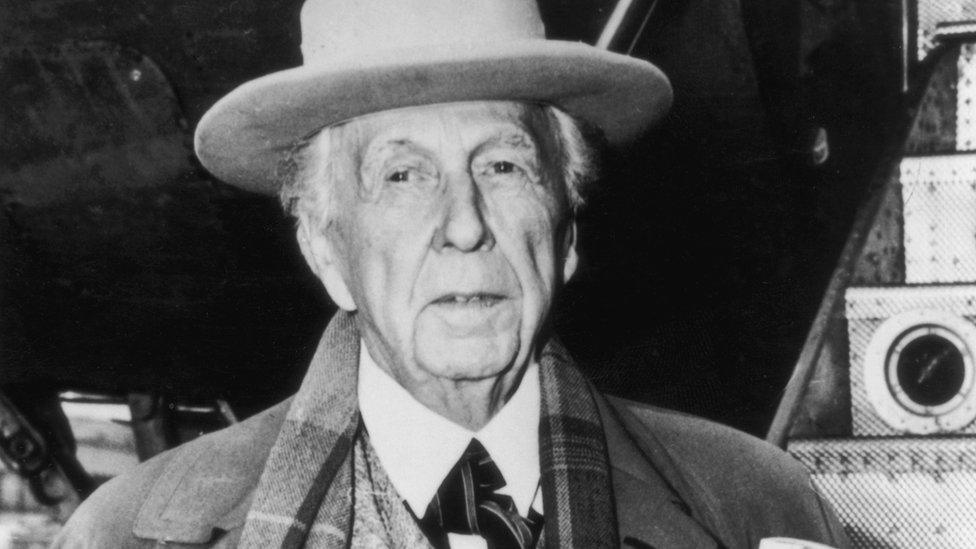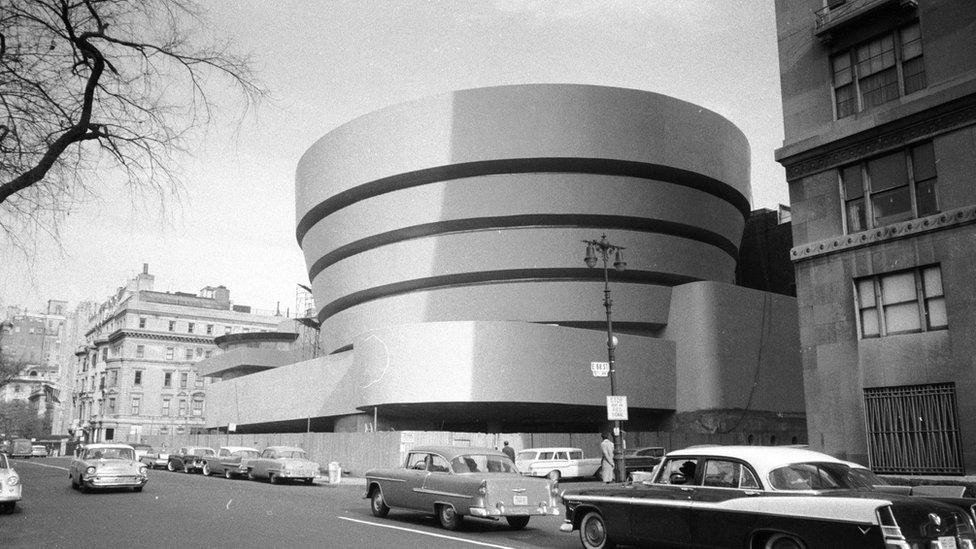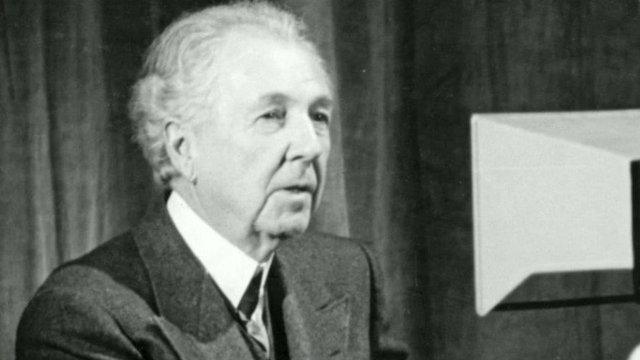Frank Lloyd Wright: Effect of architect's Welsh heritage
- Published

He is among the most-famous, celebrated and written-about architects in history. But what made Frank Lloyd Wright tick?
It is 150 years since the birth of the American, who designed innovative houses, offices, churches, skyscrapers and museums, including New York's Guggenheim.
Wright's mother was from Ceredigion, so Wales' foremost architect, Millennium Centre designer Jonathan Adams, travelled to the United States to discover what role Wright's Welsh heritage played in his style and beliefs.
And he found echoes of Wales throughout the visionary's life.
Wright's mother, Anna Lloyd Jones, left Llandysul for Wisconsin, aged five, in 1844.
Her family hoped to escape the persecution of their Unitarianism faith and to establish a little piece of Wales in America, Mr Adams discovered as part of BBC2 Wales documentary, Frank Lloyd Wright: The First Modern Architect.
It was into this devout Welsh-speaking environment that Wright entered the world in 1867.
"He was surrounded by the Welsh language for much of his childhood and must have understood at least some of it, although he'd certainly forgotten it as an adult," Mr Adams said.
"But his heritage is evident in the name of his estate -Taliesin."
However, Mr Adams argues a far bigger influence on Wright's career was his family's Unitarianism.

Frank Lloyd Wright designed the famous Guggenheim Museum in New York
"His mother's family felt that they had to flee Wales, because of their belief that God is a single entity and that Jesus was purely human.
"That sense of being an outsider, and standing firm in his belief in the face of crushing criticism, was something which defined Wright," Mr Adams added.
"From an early stage in his career, he was always looking to do things differently, so much so that he refused to join the American Institute of Architects."
Another aspect of his Unitarian influence was the sect's belief in God's constant innovation through the agency of man.
Wright was a pioneer of reinforced concrete and the widespread use of glass, even when others doubted the safety of his designs.
Wisconsin officials blocked his use of slender, tapering concrete pillars in the construction of the Johnson Wax building, until Wright demonstrated that, far from being able to take the required six-tonne load, each could bear more than 60 tonnes.

Jonathan Adams travelled to Chicago while tracking the life of Frank Lloyd Wright
Wright was no less creative with interiors, becoming the first western architect to utilize the Japanese concept of open-plan living.
He foresaw the decline of servants in the early 20th Century and, in response, moved the kitchen into the very centre of the home, as a family space where mothers could keep an eye on their children as they cooked.
But perhaps the biggest Welsh and Unitarian influence was the importance of reflecting nature in his work.
"Wright grew up with stories of God's miracle in the ruggedly-beautiful Welsh countryside and strove to incorporate it into his ideas of 'organic architecture'.
"The best examples of these are Fallingwater, a house which seems to grow out of the rock and extend over a waterfall, and his Taliesin West Estate in Arizona, where the walls are constructed of concrete poured around randomly arranged natural boulders."
Yet as much as Wright's work pleased his Welsh family, his private life most certainly did not.
He had seven children by three wives and a fourth lover died when a servant attacked the household at Taliesin.

Frank Lloyd Wright developed the concept of organic architecture
Besides these, there were rumours of many other lovers, an obsession with new cars and a passion for Japanese art. His love of luxuries frequently drove him close to bankruptcy.
"Wright was a man who loved to fly by the seat of his pants. The way he designed his buildings was the way he lived his life.
"Once proud of their famous son, when Wright returned to live in Wisconsin, soon they came to wish he'd leave again, as his constant scandals led parents to withdraw their children from the school run by his aunties," Mr Adams said.
Wright designed more than 1,000 buildings, about half of which were actually built.
But his crowning glory is arguably the Guggenheim.
Visitors to the museum, on New York's Fifth Avenue, rise by lift through the seashell-inspired tower and descend to view the artwork by means of a spiralling ramp with random geometric images set into the floor.
Frank Lloyd Wright: The Man Who Built America is available to watch on iPlayer.
- Published9 April 2014

- Published6 December 2011
